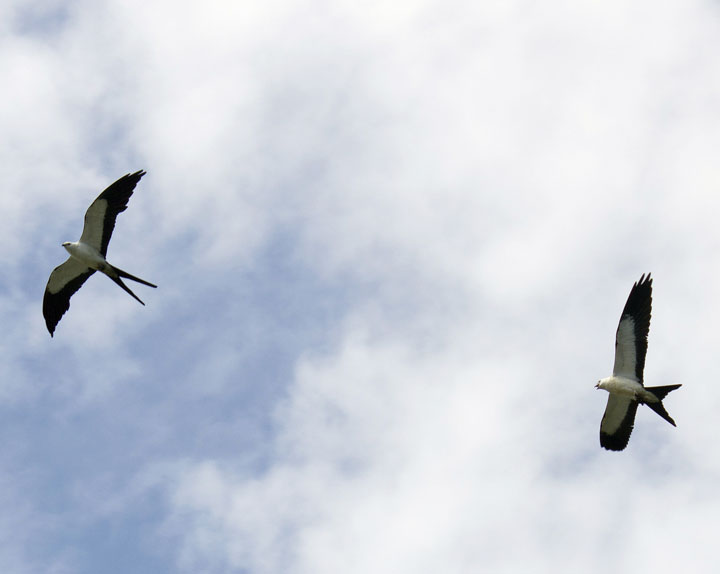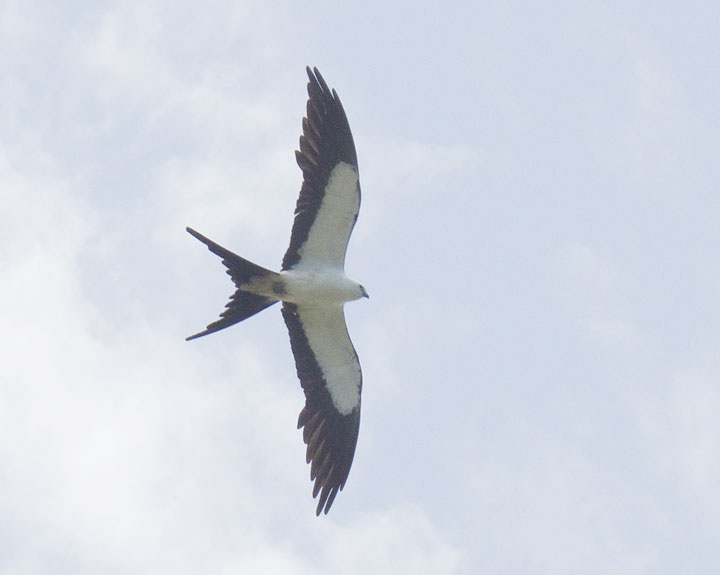Late spring and early summer is the perfect time of year to spot probably the most beautiful bird of prey, the swallow-tailed kite. In the Florida panhandle you will most likely spot them as they migrate through our area. The sight of a swallow-tailed kite is unique: a black-and-white raptor with a deeply forked tail soaring through the summer sky in a graceful flight.

After spending the fall and winter in South America, kites arrive in Florida in early March to breed. They build nests of small sticks woven with Spanish moss, preferably in tall cypress and pine. These trees emerge from a canopy of prey-rich woodlands. These beautiful raptors can be spotted in wooded river swamps; requiring tall trees for nesting and nearby open country with abundant prey. In North America the birds are found mostly in open pine woods near marsh or prairie, cypress swamps, other riverside swamp forest. In tropics, also found in lowland rain forest and mountain cloud forest.
Highly social for a raptor, they nest in loose colonies and often forage in small flocks. By early July, they begin to gather in large communal roosts for the migration back to South America.
The Avian Research and Conservation Institute (ARCI) is monitoring the migration of swallow-tailed kites. If you are interested in learning more or would like to submit a sighting, you can participate here.
Although the historic range of swallow-tailed kites extended up the Mississippi River drainage as far as Minnesota, populations had plummeted by the early 1900s. Today, kites occur mostly in Florida, although they may be found in six other southeastern states.
Feeding Behavior
Swallow-tailed kits catch flying insects in the air. It takes much of its food by swooping low over trees or lower growth, picking small creatures from the twigs or leaves without pausing. Its diet includes insects, frogs, lizards, and birds. Adults apparently feed mostly on large insects at most times of year, including dragonflies, wasps, beetles, cicadas, and grasshoppers.
Some information in this story courtesy Audubon.org and MyFWC.com

